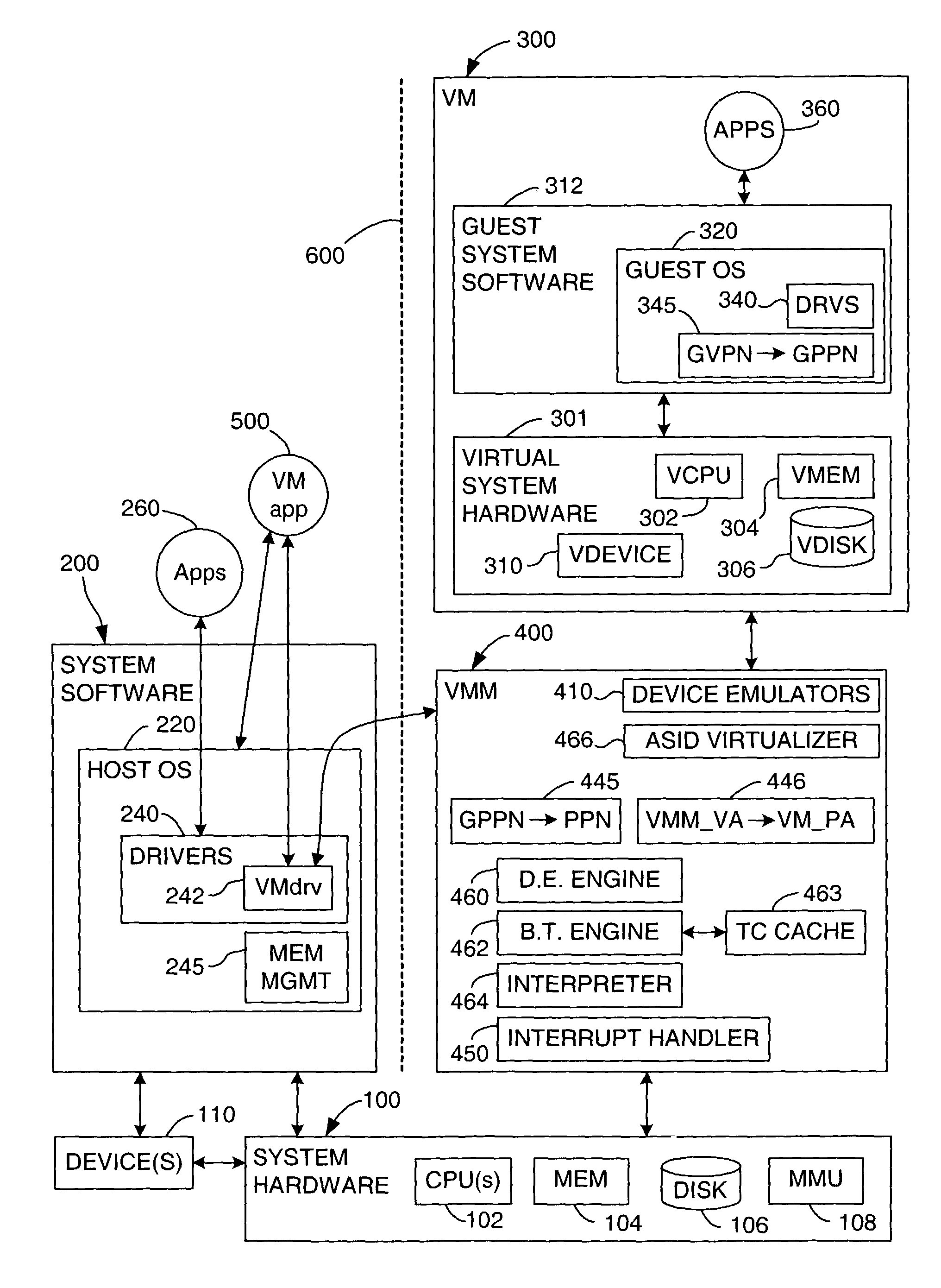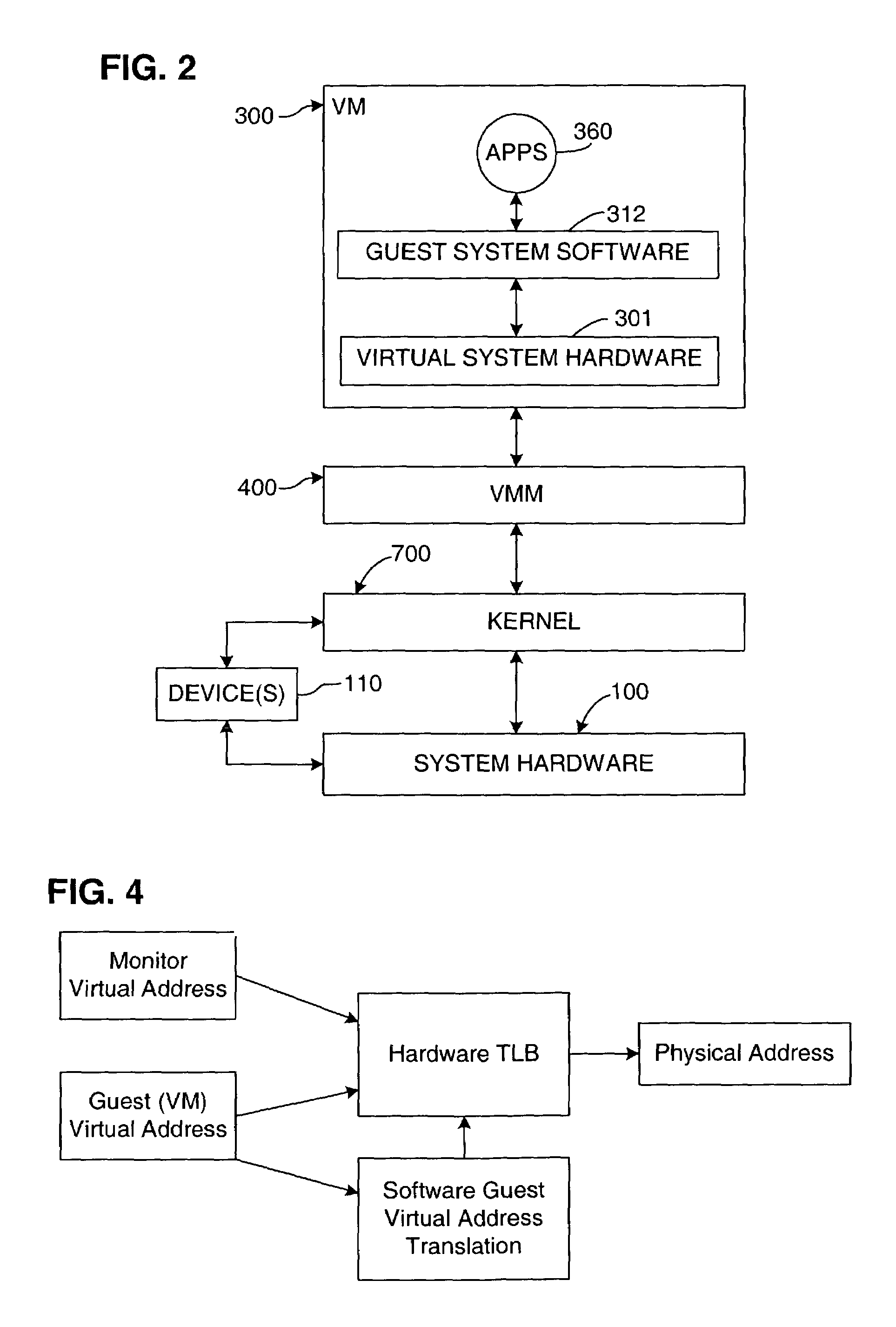Virtualization system for computers that use address space indentifiers
a virtualization system and address space technology, applied in computing, instruments, electric digital data processing, etc., can solve the problems of slow performance of users, application users (or users of applications) will not know, and it is difficult to switch between the different contexts of the various virtual machines
- Summary
- Abstract
- Description
- Claims
- Application Information
AI Technical Summary
Benefits of technology
Problems solved by technology
Method used
Image
Examples
Embodiment Construction
[0065]The invention may be implemented in any virtual computer system involving the use of ASIDs. This detailed description focuses on an exemplary embodiment in which a specific virtual computer system supports multiple VMs on a hardware system based on the IA-64 architecture, where the VMs are also based on the IA-64 architecture. The invention may also be implemented, however, in other systems involving different physical hardware architectures, as well as different virtualized architectures, including cross-platform virtual computer systems. In particular, the invention may be implemented in virtual computer systems in which the hardware system uses ASIDs, but one or more VMs, including possibly all VMs, do not use ASIDs. The hardware system in the exemplary embodiment has only a single processor, although the invention may also be implemented in multiprocessor systems, such as the alternative embodiments illustrated herein. The described embodiment uses a pair of VMMs to suppor...
PUM
 Login to View More
Login to View More Abstract
Description
Claims
Application Information
 Login to View More
Login to View More - R&D
- Intellectual Property
- Life Sciences
- Materials
- Tech Scout
- Unparalleled Data Quality
- Higher Quality Content
- 60% Fewer Hallucinations
Browse by: Latest US Patents, China's latest patents, Technical Efficacy Thesaurus, Application Domain, Technology Topic, Popular Technical Reports.
© 2025 PatSnap. All rights reserved.Legal|Privacy policy|Modern Slavery Act Transparency Statement|Sitemap|About US| Contact US: help@patsnap.com



